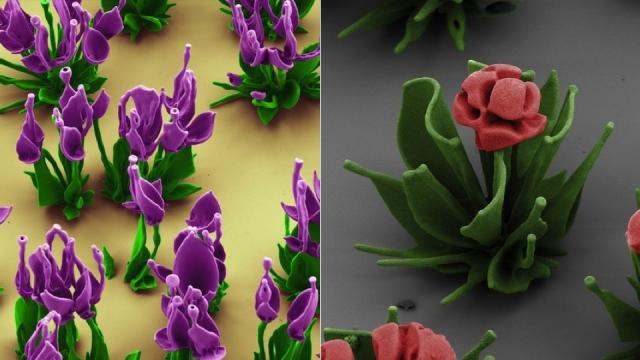These little things look exactly like flowers — and that’s because they’re meant to. But in real life you’d never be able to spot them, because they are in fact microscopic crystals grown on the surface of a razor blade.
The images — which take a starring role on the cover of this week’s issue of Science — were produced by Wim L. Noorduin, a postdoctoral fellow at the Harvard School of Engineering and Applied Sciences. Motherboard explains how they’re created:
[He] and his colleagues dissolved barium chloride (a salt) and sodium silicate (also known as waterglass) into a beaker of water. Carbon dioxide from the air dissolved naturally into the water, fomenting a reaction to form barium carbonate crystals. In response to the crystals the pH of the solution surrounding them lowers, triggering a reaction with the dissolved waterglass, and adding a layer of silica to the growing structure. This reaction uses up acid from the solution and allows the barium carbonate crystals to continue to form. As this process takes place, the shape the crystals take can be manipulated through changes to the solution–increases in carbon dioxide levels in the water creates “broad-leafed” structures. Reversing the pH gradient at the right moment can create curved, ruffled structures.
The resulting structures are imaged using scanning electron microscopy, and then false colour is added to make them look truly like flowers. That might seem a little like cheating — but we thing the results are worth it. [Science via Motherboard]
Images by Wim L. Noorduin
